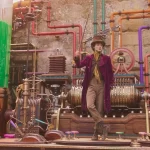Home Video Hovel: White Elephant, by Patrick Felton
In his classic essay “White Elephant Art Vs. Termite Art” the critic Manny Farber described White Elephant Art as art which “pays strict obeisance to the canvas edge and, without favoritism, the precious nature of every inch of allowable space.”
While by no means a portentous or artistic-obsessed project, The film White Elephant (Elephante Blanco) the newest film from Argentinian director Pablo Trapero fits squarely within enough of these parameters to make its title a little less than fortunate.
The titular white elephant in this film refers to a small Catholic mission inside the Villa Virgin shantytown of Buenos Aries. Juxtaposed against the relentless soul-crushing poverty that surrounds the mission, we see the story of two priests unfolding: Julian, a savvy doctor who uses his political muscle to get a medical facility built and Nicholas, an idealist whose faith is shaken after a series of failed charity projects in the jungles outside Buenos Ares. As the film deals with an ongoing turf war between gangs and the mission’s role in this battle becomes more prominent it becomes harder to hold on to the same ideals that these priests began with.
To its credit, the White Elephant neither foregrounds nor cast off the importance of faith to its characters. Intimate discussions of God’s place in the film often and with surprising candor. Never do these discussions feel forced or pedantic in the ways that one often associated with faith based cinema. Particularly when set against the backdrop of such unspeakable violence, these discussions never feel pat or contrived.
At its best, the film is briskly paced enough that it never ceases to move forward, which makes for a few moments of compelling viewing. Particularly the performances by the two lead actors Ricardo Darín and Jérémie Renier give the film a swift entry point and audience surrogate.
Unfortunately the film’s intents are almost entirely undercut by its slick, polished visual aesthetic. As the film begins to oscillate from the ground level photography of the extreme poverty of Villa Virgin and increasingly violent noirish genre sequences, the film seems to feel more like a Hollywood production, equipped with chase scenes, violent killings, almost void of emotional impact.
Perhaps this comes from the use in photography of the much lauded Sony RED camera. Its almost as if the inherent glossiness of the images this camera captures detracts from the story being told. This film is often pleasant to look at, but this pleasantness seems to belie the immediacy of the plight and suffering.
This penchant for ‘white elephant art’ begins early as the film utilizes numerous long tracking shots of the impoverished community to set the tone of the film. These shots have a leering deliberacy which immediately places the audience in the camp of an outsider. Often the camera seems to be transporting to viewer to this co community on a sort of poverty vacation.
The film is at its best when the action is far away from the church and embraces the inherent seediness of the gang wars. These sequences are photographed with panache. Yet even these sequences draw attention to the fact that no matter how much of a thematic totem they may represent, the poor members of this community serve the film merely as set pieces, akin to the collateral damage one might see in one of the Fast and Furious movies.
However, in the case of the Fast And Furious movies, we forgive this tendency as we were never asked to empathize with these “worthy poor” in the first place. There is no need for poignancy in these instances.
With Elephant Blanco Trapero seems to want it both ways. On one hand, he wants to keep the slick polished look that audiences have come to expect from digital filmmaking and blend it with the low-tech often frightening world of destitute Buenos Aries.
A rare outlying scene remains the exception that proves the rule regarding White Elephant. An early outburst of violence in the jungle happens early in the film and is photographed with unflinching relentlessness. Yet even this moment is cheapened by the presence of melodramatic music, a sign of the film’s desire to be powerful and a symptom of its deficiency in doing so.




























